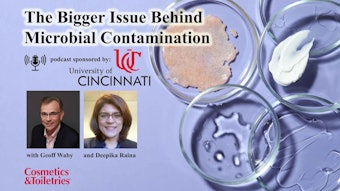It’s no secret that preservatives are high on the hit list of ingredients that cosmetic manufacturers want to replace. Why? Some experts would say that’s a good question. Questionable science has instilled a public sense of mistrust in them, so formulators are challenged to find ingredients that preserve products without “preserving” them—or to at least find ways to reduce the levels of preservatives used in a product.
An educated guess would suppose microbiologists as to more likely err on the side of consumer exposure to preservatives in products than exposure to contaminated products. In fact, some companies have taken the stand that preservatives are the safer route and simply have made the choice to include them in their premixes. The danger in this is losing a customer base that strictly demands preservative-free raw materials.
Until the time when and if preservatives are fully embraced by the public, it is the role of R&D to identify and minimize potential risks via any means possible to make products safe while satisfying the consumer need to be as preservative-free as possible.
This issue of Cosmetics & Toiletries magazine shows a little love for preservatives, recognizing their importance to cosmetic formulations. In R. Pillai’s article, “1,2-Alkanediols for Cosmetic Preservation,” the authors leverage the multifunctional benefits of a moisturizing ingredient that has added antimicrobial activity.
In addition, D. Steinberg’s article, “Voluntary Registration of Cosmetics and the Frequency of Preservative Use for 2007,” reports some interesting findings in the past year on preservative use, including the observation that parabens, paraben solutions in phenoxyethanol and imidazolidinyl urea remain the most popular preservatives despite their being attacked by the media. In addition, growth in popularity of “non-traditional” preservatives is noted.
Besides preservation, this issue of C&T magazine looks at challenges in skin lightening as Z.D. Draelos, MD, describes actives for this effect, such as licorice extract. And a technology to improve hair color retention using a quat functional olefin graft polymers is described in J. Cincotta’s feature.
Finally, who’s to say all these materials do or do not do what they claim? The testing facilities listed in our annual Who’s Who in Testing Directory—that’s who.










